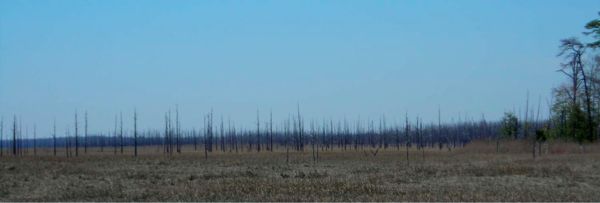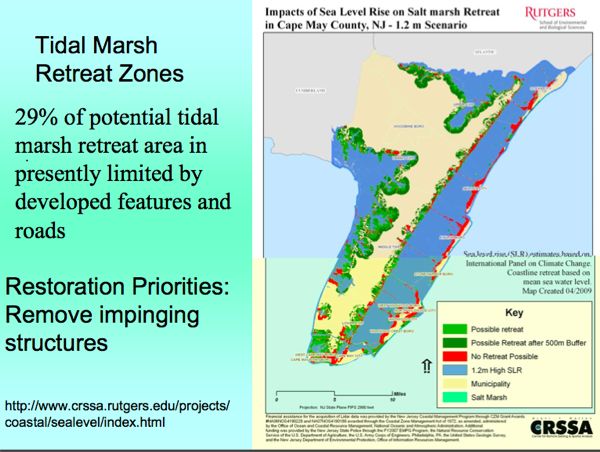Christie Contradictions Could Doom Open Space Ballot Vote
If voters figure out this scam, they might not be so supportive of open space funding until more cost effective land use planning and regulatory tools were beefed up.
[update below]
NJ Spotlight has a story today on the PR campaign kickoff by open space advocates in support of the November ballot question, see:
I thought I might put a little context and critique on the table, while exploring some stunning contradictions in the arguments of open space advocates.
A commenter on the Spotlight story was quick to note a glaring contradiction and the hypocrisy of diverting clean water money to open space, and then justifying the open space money on the protection of clean water:
“If approved, the fund would provide approximately $30 million annually to programs to improve water quality, remove underground storage tanks before they leak, and clean up polluted sites.”
They really should say, if passed this bill would be taking $48 million away from these programs. And how hypocritical that the people who imposed the nitrate dilution model of 24 acres to build a house in the highlands – in the name of clean water – are now taking money away from water quality programs.
So, in support of that comment, I responded with this series of comments, which I post here:
What is amazing is that we are spending taxpayer dollars to preserve land when:
1) local governments zone virtually all land for development, which vastly increases the market value of that land;
2) The Christie administration has abandoned the State Land Use Plan in favor of a corporate economic development plan that promotes development everywhere;
3) the Christie administration is seeking to promote development and weaken regional land use restrictions imposed by the Highlands Council & Pinelands Commission;
4) The Christie Administration is promoting development in hazardous shore and flood prone locations and weakening existing DEP coastal protections –
This includes spending hundreds of millions of federal Sandy relief money on “Rebuild Madness” to re-create the same land use development pattern that got wiped out and will be even more vulnerable given climate change and sea level rise;
5) The Christie administration is weakening the enforcement and implementation of State land use regulations at DEP, including wetlands, flood hazard, and stream buffer protection programs;
6) The Christie Administration is using every state policy tool available to promote development everywhere, including massive multi-billion dollar corporate subsidies.
7) The Legislature has looked the other way and ignored all this or affirmatively supported it.
Given all these systematic efforts to develop land, subsidize development of land, and weaken planning and regulatory protections of land, why on earth are we spending taxpayer money to preserve land????
oops, I left out items #8 & #9 (and there are more, I’m sure):
8) The Christie Administration revoked prior restrictions on extending new sewers into environmentally sensitive lands in order to promote development there;
9) The Christie DEP is suppressing science and evading Clean Water Act TMDL pollution cleanup requirements in Barnegat Bay watershed to allow more development to occur there.
*10) The Christie DEP has failed to honor the Gov.’s 2009 campaign pledge to upgrade water quality and buffer protections protections on “Category 1″ (C1) exceptional waters, despite recommendations by DEP scientists. C1 designations reduce development potential.
And the Keep It Green Coalition has done nothing to criticize the Governor for any of this.
All they want is the money.
Thank you g iannitelli for noting the contradiction and hypocrisy of diversion of clean water money to open space, and then justifying the open space money on the protection of clean water.
Besides, do those Highlands advocates ever mention that huge quantities of sewage discharge are pumped to Highlands reservoirs? See:
Do you think NY DEC would allow sewage to be pumped IN TO pristine Catskill reservoirs?
How much pollution load is that, compared with the reductions associated with development restrictions under the Highlands Act?
And if pumped polluted river water is such a significant pollution load, and if Highlands Advocates care about clean water, why aren’t they criticizing the Christie DEP’s plans to weaken protections for the water quality in the rivers that are pumped to Highlands reservoirs?
Answer: Because they are not only hypocrites, they are craved cowards and incompetent to boot.
If voters figure out this scam, they might not be so supportive of open space funding until more cost effective land use planning and regulatory tools were beefed up.
Be glad to provide links and documentation to support all of the above claims.
Just submit a comment on this post or drop me an email.
* Updated addition to original list
[update 9/22/14 – and here’s another huge problem – Christie is allowing gas pipelines to be build through “protected” open space, NJ Spotlight reports:

